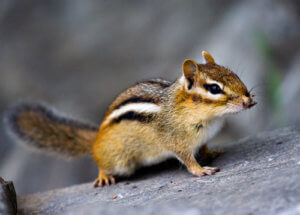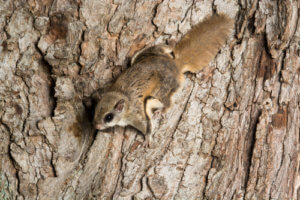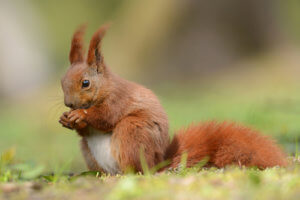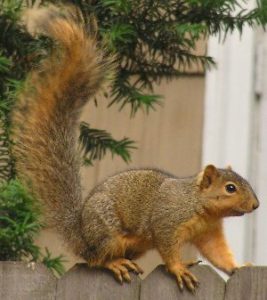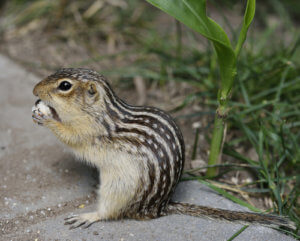Beavers or Castor Canadensis are giant, primarily nocturnal mammals. They are brown and have a long, leathery flattened tail that acts as a rudder in the water. Their teeth are yellow and curved, which they use to gnaw through wood. If they do not chew, their teeth will continue to grow until they break through their skulls. Chewing is imperative to their survival! Beavers played a significant role in Michigan’s early history. The beaver and the coureur des bois who traded their pelts and helped the Great Lakes region grow. Since the decline of the fur trade in Michigan, property owners have experienced an uptick in beaver related damage to homes and bodies of water.
Beaver Anatomy
They are the largest rodent in North America and can weigh over 60 pounds. They are America’s largest rodent and the third-largest in the world, often reaching lengths of 3.5 ft! Their body is well adapted to their aquatic world but also allows them the ability to waddle about a forest habitat in search of trees to fell. Their tails are flat, broad, flexible, and very muscular; serving as a prop when gnawing down trees. Their tails also function as a four-way rudder, and their large hind feet are completely webbed, which helps to propel them along, as well as adds strength to their ability to pull logs underwater. Their delicate forepaws are incredibly dexterous and function so well as ‘hands’ that they can carry small branches, mud, and even stones. Beavers have amazing construction abilities, using their incisors to fell trees, and their forepaws to construct dams.
Habitat
Beavers spend most of their time foraging along the banks of rivers and streams, and this is where people most often spot them. However, if there are no rivers readily available, beavers have no issue taking up residence in any body of water with banks suitable for their survival. Beavers burrow into th3e banks to make their dens; the entrances to these burrows are in a portion of the bank that submerges and angles, so the living quarters can be deep inside the bank while still above the water level.
If a beaver builds its dam too close to the ground’s surface, it may not have enough overhead support and can collapse. In the winter, when food is scarce, predators such as bears and wolf can dig into the den if it is not far enough underground. The problem is that many banks are not suitable for this type of excavation. Beavers will address this problem by mounding sticks over the den and piling mud on top of the sticks. During winter, the mud freezes, creating a rugged and durable barrier that protects the den.
Dams and Lodges
They construct dams and lodges out of sticks, mud, and logs on the banks of rivers and other bodies of water. The primary function of a beaver dam is to provide deep, still water to protect against any predators as well as to float building materials and sustenance. They may build multiple in the same river! Beaver lodges serve as their shelter, and they fashion them out of the same materials as the dams. Each summer, mature beavers will mud the exterior of the lodge so that it will freeze providing warmth and protection. Throughout the years, their population has declined severely due to hunting for their fur and glands (which is where castor oil comes from). Their hunting season is in the fall, but special permits can be granted in the off-season.
We most often receive calls from property owners experiencing issues due to beaver damage of trees and flooding of waterways, which interferes with land uses. This can cause devastating structural and landscaping damage if untreated. We specialize in the trapping and removal of these animals, so call us to set up an inspection today!
